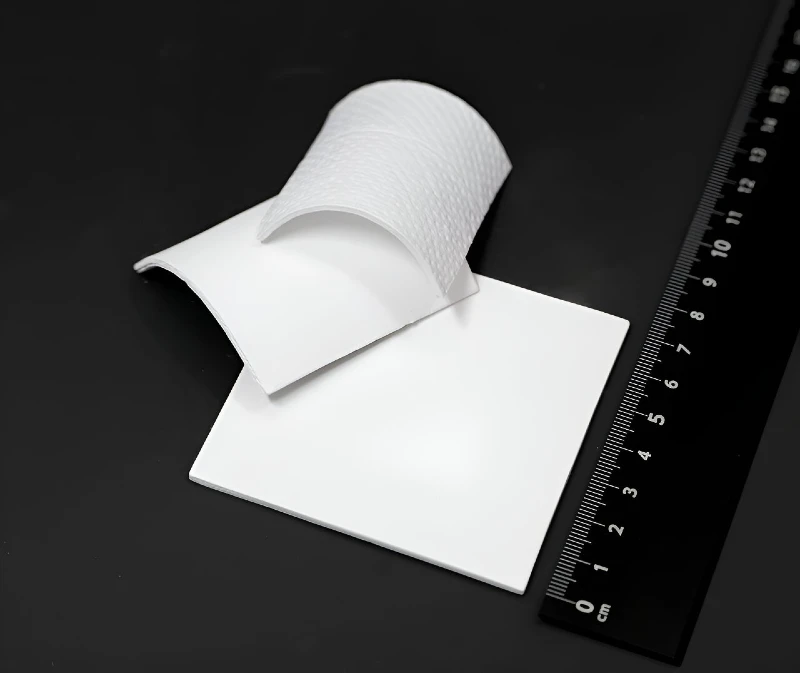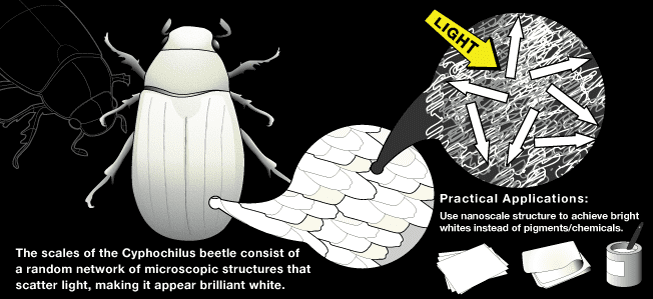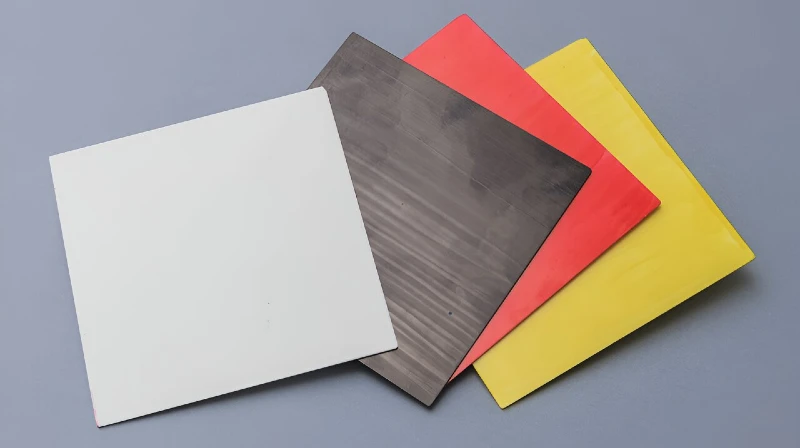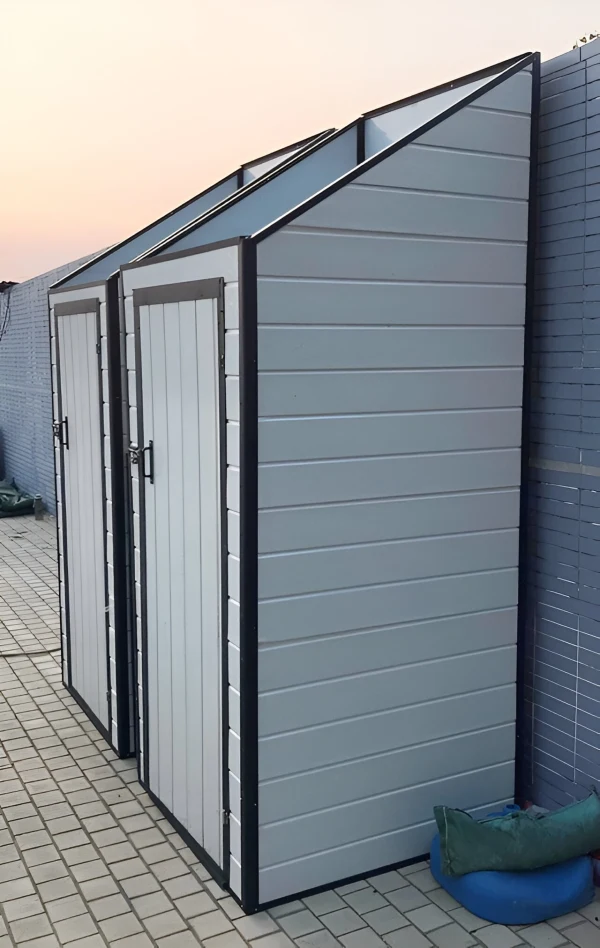Researchers at City University of Hong Kong (CityU) have unveiled a groundbreaking material, known as ‘cooling ceramic,’ marking a significant advancement in passive radiative cooling (PRC) technology. Published in the journal Science, their research introduces a hierarchically structured ceramic that offers a sustainable and efficient cooling solution for the construction sector, potentially playing a crucial role in combating global warming.
The cooling ceramic stands out for its high-performance optical properties, which enable energy-free and refrigerant-free cooling. It’s cost-effective, durable, and versatile, making it an ideal candidate for wide-scale commercialization, especially in building construction.
This innovative material reduces the thermal load of buildings and maintains stable cooling performance in various weather conditions across all climates, thereby enhancing energy efficiency.

According to Professor Edwin Tso Chi-yan from CityU, PRC is a key technology in reducing the demand for space cooling, curbing environmental pollution, and tackling global warming. However, existing PRC materials, either based on nanophotonic structures or polymeric photonics, face challenges in terms of cost, compatibility, weather resistance, and effective solar reflection.
The cooling ceramic developed at CityU addresses these challenges. It possesses advanced optical properties and robust applicability. Its unique features include color variability, weather resistance, mechanical robustness, and the ability to counter the Leidenfrost effect – a phenomenon that hinders heat transfer and renders liquid cooling on hot surfaces ineffective.
The fabrication of this ceramic involves a simple, cost-effective two-step process using readily available inorganic materials like alumina. This process involves phase inversion and sintering, negating the need for expensive equipment or materials and paving the way for scalable manufacturing.
Optically, PRC materials are evaluated based on their performance in solar and mid-infrared ranges. The cooling ceramic’s high bandgap of alumina minimizes solar absorption, while its structure, inspired by the bio-whiteness of the Cyphochilus beetle and optimized through MIE scattering, achieves near-perfect solar reflectivity of 99.6% and high mid-infrared thermal emission of 96.5%. These properties are superior to current materials in the field.

Moreover, the cooling ceramic offers UV resistance degradation and fire resistance, withstanding temperatures over 1,000°C – surpassing most polymer or metal-based PRC materials. Its weather resistance, chemical stability, and mechanical strength make it an ideal choice for long-term outdoor applications.
One of the most significant features of this ceramic is its superhydrophilicity at high temperatures, which enables effective evaporative cooling by facilitating rapid droplet impregnation due to its interconnected porous structure. This feature mitigates the Leidenfrost effect, which is a common limitation in traditional building materials.
In practical applications, the cooling ceramic demonstrates substantial benefits. Professor Tso notes that its application on a house roof can lead to over 20% electricity savings for space cooling, indicating its potential in reducing dependency on traditional active cooling methods. This can help avoid electricity grid overload, greenhouse gas emissions, and the development of urban heat islands.
Looking forward, the research team at CityU aims to further explore passive thermal management strategies, extending the application of their findings to diverse sectors like textiles, energy systems, and transportation. This innovative cooling ceramic not only represents a significant scientific achievement but also offers a sustainable and efficient solution to some of the most pressing environmental challenges of our time.

Our Analysis: A Cheatsheet of How Cooling Ceramics Could Make Your Life and the Earth Better
That was a lot of science! But, please, don’t let all of that convince you that you have no stake in the potential of this innovation. This cooling ceramic is a significant breakthrough with far-reaching implications for energy efficiency, environmental sustainability, and various industries and many of which could directly benefit you in the coming years.
Here’s a breakdown of how this innovation can impact and improve lives, and its potential benefits to the earth and environment:
Potential Impact and Improvement for People
- Reduced Energy Bills: The cooling ceramic’s ability to reflect sunlight and efficiently cool buildings can significantly reduce the need for air conditioning. This means lower electricity bills for homeowners and businesses, making it a cost-effective solution in the long run.
- Increased Comfort: By maintaining stable indoor temperatures, this technology enhances comfort levels in homes and workplaces, especially in hot climates.
- Healthier Living Environments: Unlike traditional air conditioning, which can circulate dust and allergens, the cooling ceramic provides a more natural cooling method, contributing to healthier indoor air quality.
The Highly Likely Environmental Benefits
- Reducing Greenhouse Gas Emissions: Air conditioners are major contributors to greenhouse gas emissions. By decreasing reliance on them, cooling ceramic can significantly reduce these emissions, aiding in the fight against climate change.
- Energy Conservation: It promotes energy efficiency, which is crucial in reducing the overall energy demand. This conservation is vital for sustainability and for reducing the strain on electricity grids, particularly during peak summer months.
- Combatting Urban Heat Islands: In urban areas, concentrations of buildings and concrete lead to higher temperatures. This technology can help mitigate this effect, making cities more livable.
Industries That Could Be Impacted By This Cooling Ceramic
- Construction and Building: This is the most direct industry to benefit. Incorporating cooling ceramics in building materials can revolutionize building designs, focusing on energy-efficient and sustainable structures.
- Real Estate: Property developers could market more eco-friendly and energy-efficient homes, appealing to environmentally conscious buyers.
- Energy Sector: Reduced reliance on traditional cooling systems means lower energy consumption, impacting how energy companies manage demand and supply.
- Automotive Industry: The application of this technology in car manufacturing could lead to cooler vehicle interiors, especially when parked in the sun, enhancing the comfort of passengers and reducing the need for air conditioning.
- Textile Industry: Exploring its use in textiles could lead to the development of clothing that keeps wearers cool in hot climates, a major advancement in fabric technology.
- Transportation and Infrastructure: Use in public transportation systems and infrastructure could enhance passenger comfort and reduce cooling costs.
- Electronics: It could be used in the cooling systems of electronic devices, potentially increasing efficiency, and lifespan.
In Short…
Imagine living in a house where the walls and roof help keep it cool, reducing the need for air conditioning. In summer, instead of facing high electricity bills, you enjoy a comfortable, naturally cooler home. This isn’t just convenient, but also healthier, as it avoids the air quality issues often associated with air conditioners.
More To Discover
- Enviva In Crisis: Dissecting the Inevitable Collapse of Biomass Energy’s Biggest Player
- Ocean Protection Made Simple and Affordable: A New, Cheaper Approach to Marine Conservation
- Tyson Foods Releases Over 370 Million Pounds of Pollutants into U.S. Waterways
- Oregon Announces Fishing Crisis due to Prolonged Commercial Fishery Failure (What We Learned From Their Mistakes)
For businesses, especially in the construction and real estate sectors, this technology offers a unique selling point: eco-friendly buildings that are both cost-effective and comfortable.
On a broader scale, by reducing our reliance on energy-intensive cooling systems, we’re contributing to a healthier planet, tackling climate change, and making our cities more livable. This is a clear example of how a scientific breakthrough can have a tangible impact on our everyday lives and the environment.




















